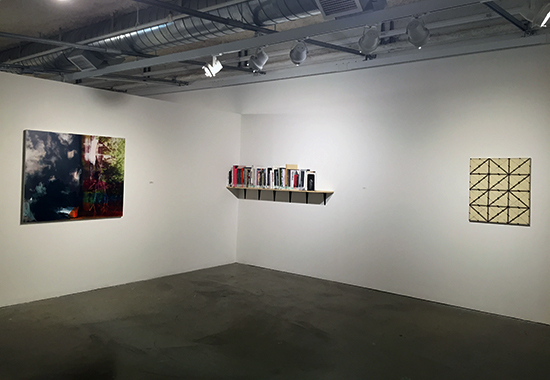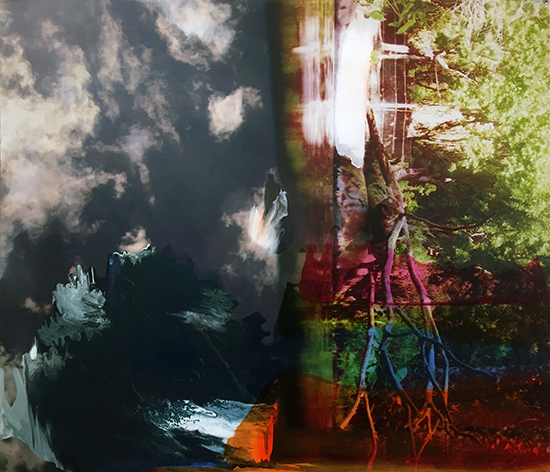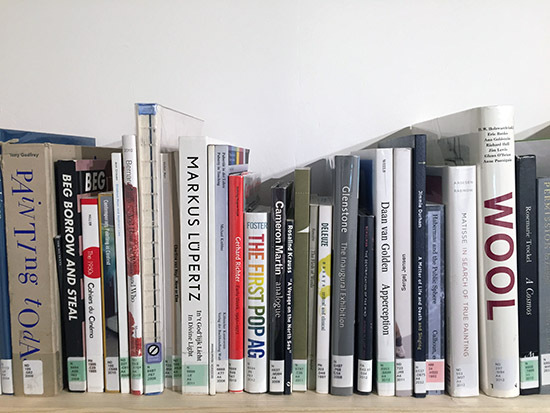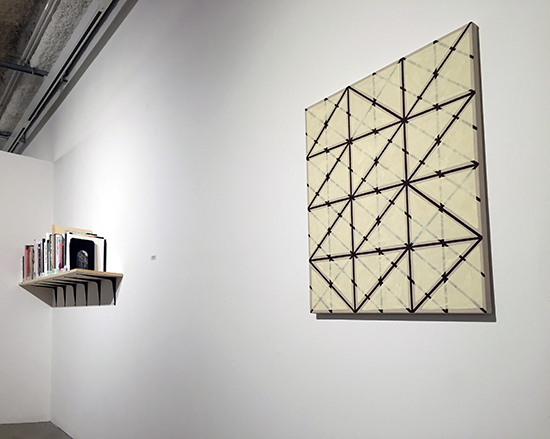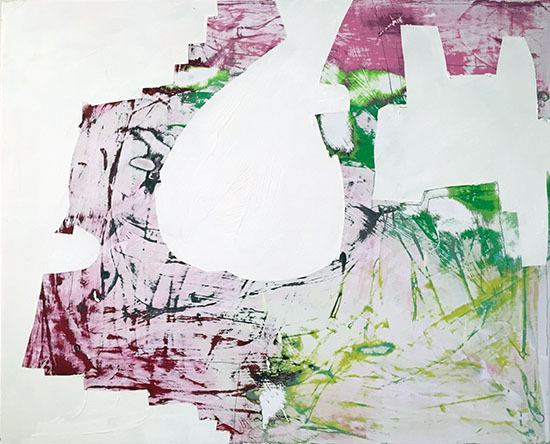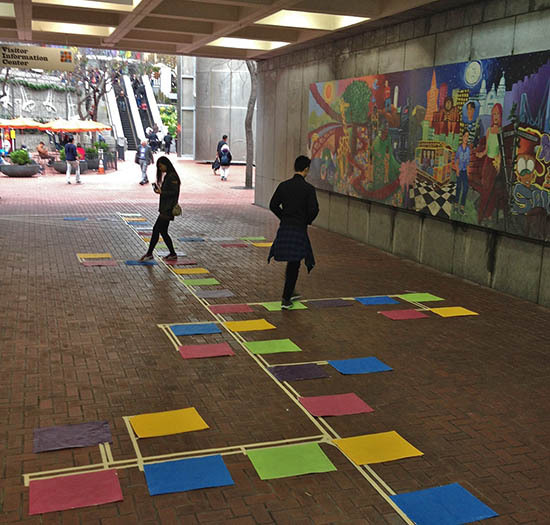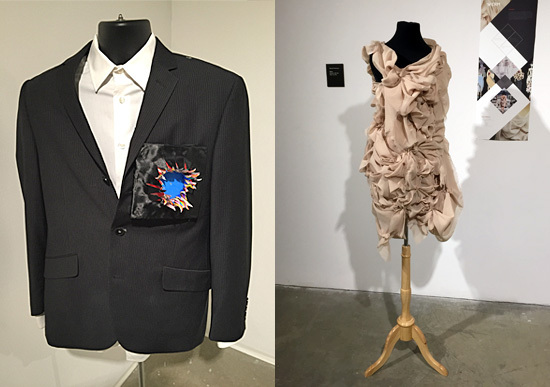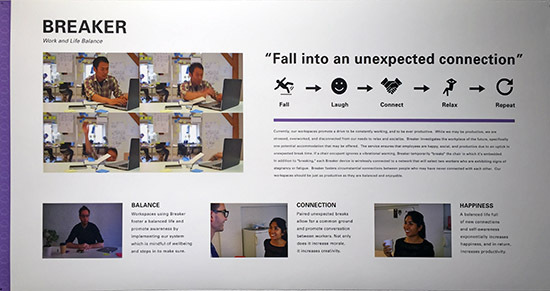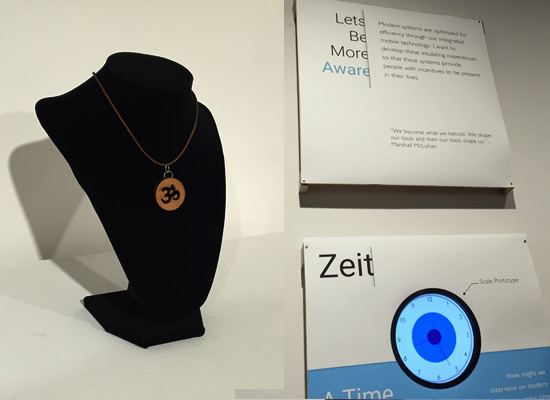A zeitgeist of "being present" definitely is in the air these days.
In an era where people at restaurants peruse their smart phones instead of talking to that person sitting across from them (and detox solutions to screen addiction are a growing market), this zeitgeist is more than welcome. And one of the best ways of grounding yourself in the present is--looking at painting. There is a necessary immediacy and attention required when standing in front of an artwork, addressing another's interpretation of the world through their lens, and their language.
So it's timely that the Campus Center Galleries at the California College of the Arts, San Francisco hosted two very different shows recently, both of which required one to think about and be present. From February 23-28, Linda Geary, Chair of Undergraduate Painting and Drawing coordinated "Painting, Expelled," a rich and varied exhibition featuring the painting-based work of CCA alums, faculty, staff, and students. In addition to motivating one's attention, it offered an intriguing survey of the current state of painting with work that included a range of techniques, from classic charcoal on paper to glitter on wood.
The south gallery contained a quiet, yet powerful installation of Kim Anno's "Great Divide," Jordan Kantor's "Untitled (Library Acquisitions)," (a bookshelf of monographs of iconic artists and art books--every book Kantor has requested the library purchase), and Steven Beal's "Untitled." The juxtaposition of these three works--with Kantor's bookshelf in the middle--offered a strong metaphor to painting's continuing evolution, and the persistent resonance of abstract work.
Also featured was a work by Linda Geary, referencing presence and absence through the use of opaque, map-like white forms over a rich landscape of scraped and layered color.
From March 2-7, the galleries also hosted "First Light," a showcase of the work of undergraduate Interaction Design students. Coordinated by Interaction Design Chair Kristian Simsarian, "First Light" explored ideas and directions for the interactive technologies of the future. Wholly refreshing, however, was the palpable thread throughout the works that emphasized the need to be away from the virtual, and instead, firmly ensconced in the actual. A welcome trend, especially given that this generation of makers has grown up deeply absorbed in screen culture.
The projects ranged from whimsy to the spiritual and philosophical. Unexpected music and sound played a large part. Rachel Rosenson and Gina Knox developed "Hear You Go," an intervention which they installed at the Powell Street transit plaza. A hopscotch of large squares encouraged people to actually notice the plaza for a moment and be a kid, choose a genre, and create spontaneous, sometimes humorous music by jumping on the squares.
Treyce Meredith (providing a delightful alternative to children's addictive video games), developed a raincoat that enables a child to play in the rain, creating their own musical melodies whenever they jump in puddles. William Felker's "Snoodie" (a hoodie + snood) contains electronics that enable recording and sharing of memories and family histories. Brett Killoran's "Provocatour" project rendered a leather jacket into a rad wearable instrument, enabling the user to be a walking one-man rock band.
Enhancing the mundane was also a theme. Rachel Rosenson's Werm dress transformed couture into a moving, "living" organism adorning the body, and David Schrimp's Accentbot is a colorful lapel flower that actively blossoms.
The projects also addressed issues of shaping positive social behavior. Charnell McQueen paired up with Analicia Barros to create "Lake Merritt Lily," which encouraged visitors to keep the lake clean by picking up trash. Kirk Draheim's "Hylo" is a social network designed to help real communities collaborate and communicate. And Eli Bornstein's "Breaker" project envisions an office chair that simply collapses when the worker fails to heed warnings of working too many hours, offering a sudden, humorous reminder to take a break and laugh with their officemate.
In the spiritual vein, Ankita Akerkar and Lee Martinez created "Divine Pendant," an interactive pendant that when worn, "refreshes" its light at temple, and, once the user departs, fades gradually over time only to be refreshed when the user enters the temple once again. An additional remote feature alerts the user whenever a priest enters the temple, again initiating a moment of contemplation about spiritual connection. Adam Lukasik's "Zeit" touches upon the philosophical inquiry of controlling time--do we allow our devices to control our time, or can we relinquish that control and render time abstract, empowering us to be more in the present?
Watch this space for more news on what's going on at the CCA Galleries, with upcoming exhibitions at Fuseproject and spring graduation showcases in May!
